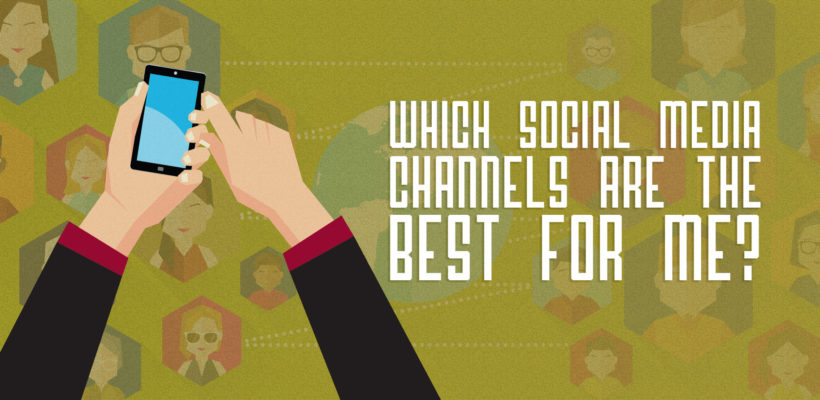
Chances are, you should be using a social media channel (or two, or more) to help market your business. But what do you do? How do you get started? If you’re already out there, are you doing it correctly? And how could you improve what you’re doing?
First, you need to know the answers to these questions:
- Is your business for other businesses (B2B) or for consumers (B2C)?
- Who are your target audiences and on what social media channels will you find them? If you have not explored and created your target audience profiles and personas, now is the time!
- Do you know the purpose and differences among the social media channels you’re considering?
- What are your goals for using social media? Drive traffic to your website? Build awareness of your brand? Connect and network with your tribe? Sell products or services?
- What media will be the most valuable to your audience(s) that support your goals? Video? Photography? Illustration? Creative writing?
- What channels are your competition using, what messages and creative are they delivering and what kind of engagement do they get?
Knowing the answers to these questions can help you choose the specific social media outlets that will work hardest for you. For example, if your target market is adults and they’re building their own communities all over Facebook, you should probably be there. Are you targeting stay-at-home moms who love decorating projects? You should be on Pinterest like they are. And where are 29-year-olds with tattoos? You’ll find them on Instagram.
How are social media channels different?
Take a look. This certainly doesn’t include a comprehensive description or all the differences among these five popular channels, but it may help you understand the overall advantages. And these aren’t all the channels by far. There are lots more, such as YouTube and Snapchat, not to mention niche targeted channels like Houzz and Alignable. And when you consider that there are 4.33 billion people using social media sites at the start of 2021, they’re not going away.
This is the backyard barbecue of social media, where friends and neighbors hang out. This channel has wide reach, great targeting capabilities, and detailed analytics. It works well with target markets of people who are 35+.
Imagine this is the big, noisy cocktail party of social media channels. It works well for immediate announcements, and direct communication between clients and customers, which helps build loyalty and relationships. Analytics and demographic data are not as thorough as Facebook, though.
Think of this as the sit-down dinner you have with good friends — it’s intimate and personal. Largely a visual medium, it’s excellent for building brand awareness and connecting with your tribe, and works well with a younger audience (15 to 35). There are no clickable links on regular posts (there are for paid ads), so it isn’t the best choice if your goal is to drive traffic to your website.
Picture colleagues getting together at a bar after work. That’s what this social channel is like. It works best for B2B marketing and allows for fine-tuned targeting by industry and position, but it can be expensive when you compare costs per click.
This is the table full of mostly women talking and working on art/design/creative projects together. Like Instagram, it’s a great choice for visual marketing—but not B2B marketing—and helps drive traffic since each “pin” automatically links back to its source. Nearly 70% of the market is female.
Engage, engage, engage.
Success is not about the number of followers you have; it’s all about engagement. So if you have a smaller number of “high quality” and relevant followers, you’re in better shape than a competitor who has a larger number of followers who aren’t engaged.
While your goal is always to reach the most relevant people through increasing followers and having your content shared, liked and commented on, it’s not good form to ask for these things unless it’s truly meaningful to your community and not to your business.
What’s the best strategy? Create and share the most meaningful and well-produced content you can. Our social channels are filling up quickly with content that is creative, fun, entertaining… ENGAGING. Poor quality drivel is quickly passed over. Let’s not drivel.
Final thoughts…
Set goals. Have a strategy. Work the strategy. Assess. Realign if needed. Rinse, and repeat. And remember… No drivel.
As always, if you have questions or need branding and marketing help, your Red Chalk friends are right here. Don’t hesitate to give us a shout.


